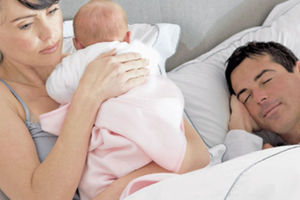Is vaginal delivery preferable to Cesarean section?

What you need to know:
- For some women, natural is the way to go, while for others, C-section provides an easier, less excruciating birth process.
Monica Wambua began to prepare for her baby’s arrival a few weeks after she found out that she was pregnant.
She sought a house help at the beginning of her second trimester, baby-proofed her house, bought new baby clothes and dolls, and identified the hospital where she would check in for delivery.
Though she prepared most of what she would need, Monica was still not sure whether she wanted to have a natural delivery or cesarean section.
“I felt that as a mother, I had the right to decide if I wanted to push or have a C-section delivery. But I was not sure which way to go,” says the mother of one.
Apparently, Monica felt that having a natural birth was the 'morally upright way' of giving birth.
“I felt as if pushing and experiencing hours of labour pains was the mark of motherhood. I felt that this is what would give me the right to say ‘uchungu wa mwana aujuaye ni mzazi’. I feared that going the caesarean way was too artificial and uncultured,” she says.
On the other hand, she still wondered why go through the natural process when there is an easier option.
“I’d heard stories of women who lost their mind in labour wards due to labour pains, others who pulled beds from one end of the room to the other in attempts to vent out the labour pains, and others who inadvertently gave birth at unexpected places like the floor. It freaked me out and I didn’t want to suffer that too,” she says.
This is the dilemma that most expectant women face when their delivery dates are fast approaching. For some women, natural birth is the way to go, while for others, C-section provides an easier, less excruciating birth process.
The myths
The choice on which mode is best for giving birth is surrounded by myths and misconceptions.
Loise Gakuya, a mother of two, shied away from having a natural delivery after she heard that reproductive organs of women who choose this process are no longer as conducive for sex as they were before.
“I heard that women who have natural births have their reproductive system so stretched when giving birth that it ruins their post-birth sexual experience. I didn’t want my sex life to suffer as a result of giving birth naturally,” she says.
Brigit Ageyo, a mother of one, was in a similar boat. After having a natural childbirth, Brigit was convinced that it affected her sex life.
Consequently, she took the blame for her partner’s lack of enthusiasm in getting intimate with her.
“I persevered the lack of sexual satisfaction in silence. I couldn’t tell him that he was not measuring up. I blamed his premature ejaculation on my ‘looseness’ and feared that he’d start seeking intimacy elsewhere,” she says.
To atone for his shortcomings, her partner would complain that her sexual organs were 'loose' and dry, but refuse to use vaginal lubricants that claiming they were artificial and harmful.
She admits that after she gave birth, she’d feel dry and endure sharp pain when having sex.
There are also women who believe that the type of child birth method they choose affects how their children will look.
“I have always felt like having a natural birth affects the kind of shape a child’s head and face look like! I don’t want my child to have funny looks!” says Brenda Gitau.
Dr. Elizabeth Wafula, a gynecologist based in Nakuru, debunks this as another myth.
Child birth and sex
According to Dr. Wafula, both the natural and caesarean section are bound to affect a woman's sex life in one way or another.
“On one hand, women who have a cesarean section may resume having intercourse within eight weeks of delivery. On the other, women who have episiotomies – surgical incisions through the perineum to expand the vaginal opening – may take some time to resume sex mainly due to the nature of their incision but [they] will have prevented rips, which are hard to repair, and [they will also have] limited the stretching of their pelvic floor [more] than women who don’t,” she says.
Number of kids vs delivery method
While some women who have children via cesarean section would wish to have more than two or three babies, many feel restricted.
Apparently, they are convinced that after having one child by caesarean, they can never go back to having a natural birth.
Julia Mwambia attests to this. “I would have wished to have four children. But I was convinced that once a woman had a C-section, she’d always have any other child that way,” she says.
Dr. Wafula however disputes this. “It is no longer true that if you have your first-born via C-section, then all your other deliveries will have to follow suit. Many women are having and, or attempting to have natural births after having a previous cesarean section delivery,” she says.
However she cautions that for you to have a natural birth after a previous cesarean section, you must have a pelvis that is large enough to allow a vaginal delivery.
“You must also not have had more than one cesarean delivery where the incision was made on the uterus rather than the belly,” she cautions.
Veronica Wanyonyi affirms this. “I was asked for copies of my cesarean report when I checked in for a natural birth after having my first born through cesarean. The doctor said he wanted to check what kind of incision I had and whether it’d affect my birth.”
You should also deliver your baby at a hospital where an emergency cesarean can be done on short notice if need be.
Recovery after C-section
According to Dr. Wafula, here are some few steps you can take to ensure you have a stable and quick recovery after undergoing a cesarean section:
- Make good use of your pillows to support our abdomen when resting. Note that your abdomen is still weak from the incision and your abdominal muscles are still healing from the incision.
- Monitor the incision regularly. Call your doctor if you notice any redness, discharge or inflammation on it. Keep it clean to avoid infection.
- Take time to heal. Do not rush into doing chores or lifting heavy items. Your body is still weak and needs enough time to heal on its own.
- Take a lot of water to help you urinate regularly. Desist from holding urine.
- See that your diet is nutritious enough and contains high-fibre items to avoid constipation. Bear in mind that your digestive system will slow down after your C-section.
- In your first week, strictly avoid climbing stairs and allow close family and friends to help around with chores.
Healing after natural birth
- If your skin got ripped or an incision was made to accommodate the baby, ensure that you avoid infection and wear sanitary pads. See your obstetrician or gynecologist if you suspect that you're not ok.
- Beware of the continual contractions that your uterus will go through as it attempts to regain its normal size after childbirth. For about four weeks, your uterus will release a red, bloody discharge known as lochia. You will need to wear pads for this.
- If during intimacy you feel dry even after the healing period, try using medically approved vaginal lubricants. See a gynecologist if you have persistent pain.
- Do not attempt to resume sex, insert any object or have your partner perform oral sex on you before the stipulated healing period from your gynecologist or obstetrician.




